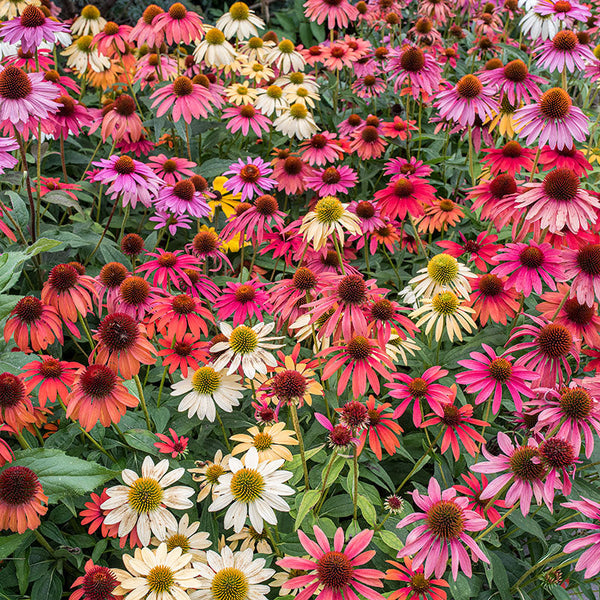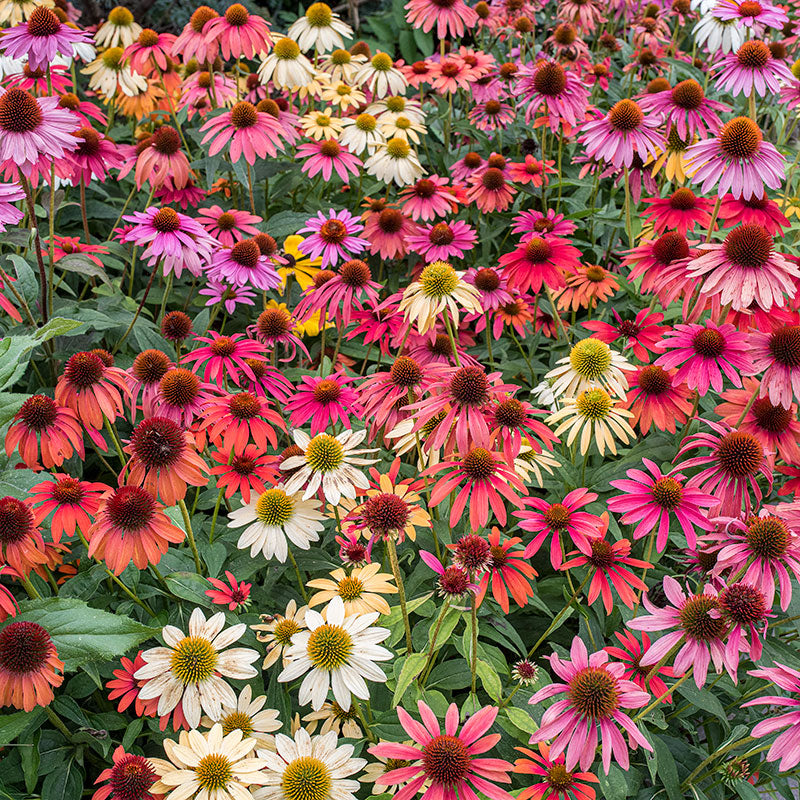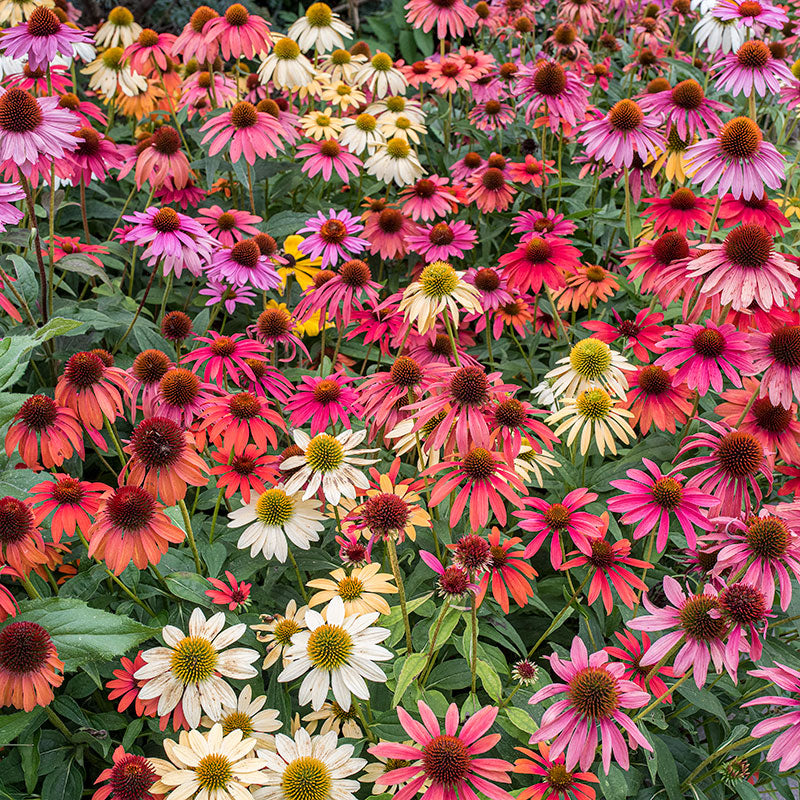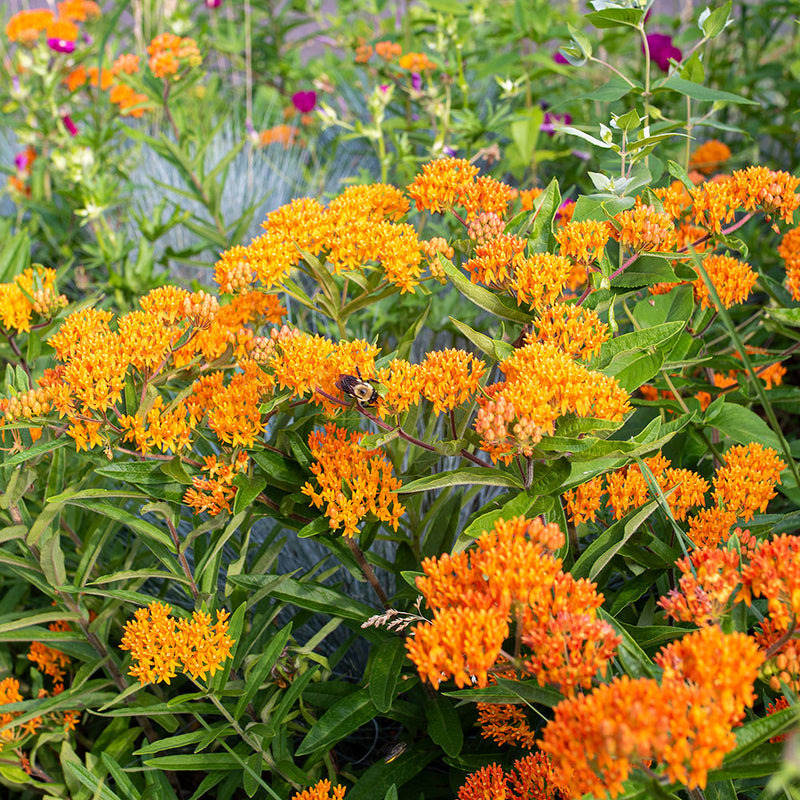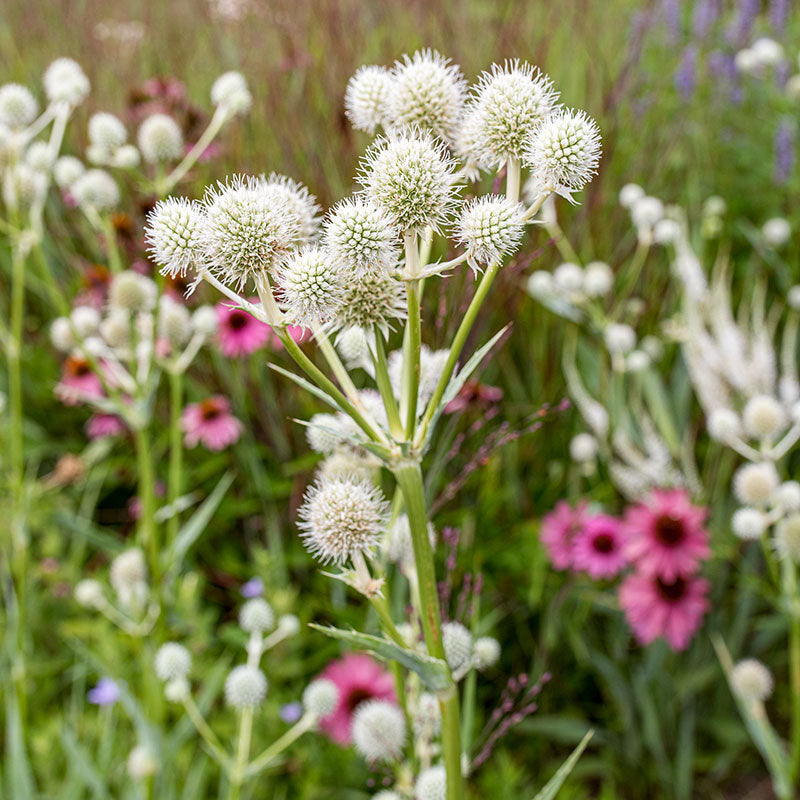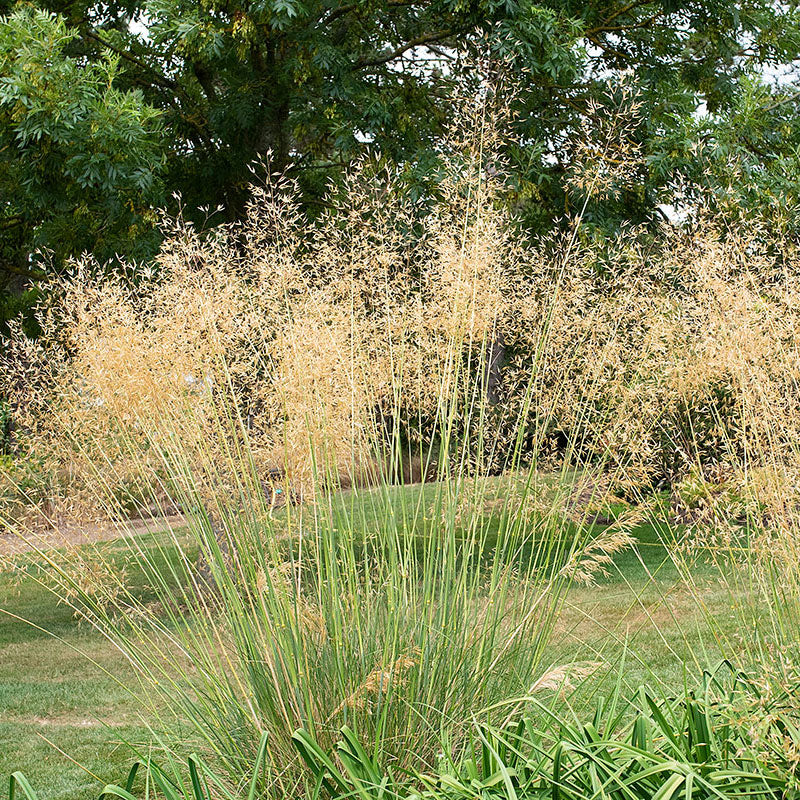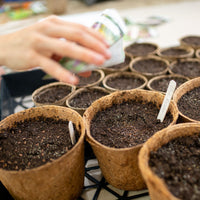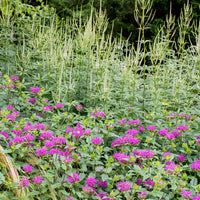SOWING INSTRUCTIONS
Sprout Time:
7-21 days after chill
Starting Indoors:
Sow in late winter and keep at 60-65°F. An initial moist stratification period with temperatures of 40°F for 3-4 weeks may increase germination rates, but is not essential.
Starting Outdoors:
Direct sow in earliest spring or late summer to fall.
PLACEMENT & CULTIVATION
Coneflowers' many sturdy flower stalks bristle with glowing orange anthers on raised domes surrounded by colorful long ray petals. Native to the East, this relative of Rudbeckia is long-blooming in summer, heat tolerant, and perfect in meadow gardens and borders, adding a distinctively upright structure. Butterfly magnets, we often see pairs of fritillaries on the same blossom, sharing it with a bumblebee! They offer up seeds for goldfinches later in the season, so as summer progresses, stop deadheading to develop an abundance of ripe seeds. Protect with gravel mulch or evergreen boughs their first winter to increase overwintering success.
Watering Details:
Water regularly the first season while establishing, then only during especially dry, hot spells.
Soil pH:
Slightly acidic to neutral
Fertilizer:
Provide with about 2" of compost annually in early spring—too much fertilizer will cause the plants to become leggy.
Diseases & Pests:
Echinacea is rarely troubled by pests or diseases, though it may be susceptible to aster yellows. While not a fatal issue, it may cause unsightly foliage issues and is incurable; remove diseased plants promptly to avoid spreading. Prevention via insect control and weeding (especially removal of other daisy-like plants, such as dandelions) is quite helpful.
When to Cut for Bouquets:
Cut when flowers are 3/4 open.






























